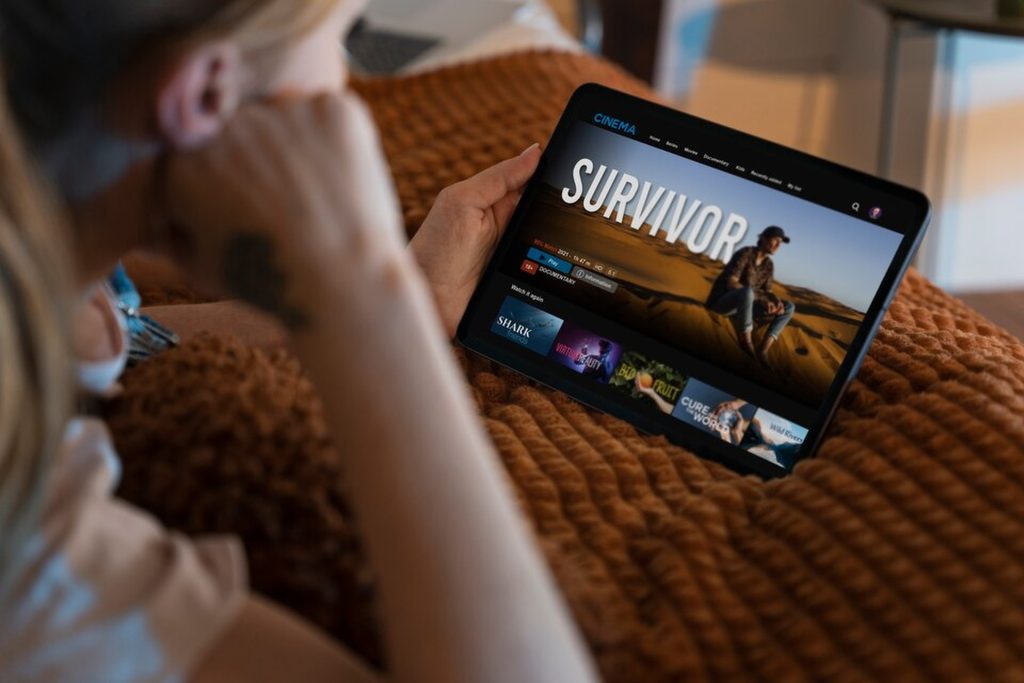Streaming platforms actually changed the way we enjoy entertainment now. From DVDs renting to streaming the journey is basically incredible. This article explores the history, strategies and future of Netflix and others. Find out where things are heading!
The Rise of Streaming Platforms: A Historical Overview
Streaming changed entertainment. It started small but is now ruling the world, you know, like everywhere. Before streaming became popular, DVDs and cable dominated our lives. Cable had lengthy subscriptions, and DVDs needed physical rentals. Convenience was missing.
Then Netflix came. It started as a DVD rental company and then switched to streaming, and people loved it. It added movies and series in one place. It was a new, creative solution for viewers.
Over time, more platforms joined the trend, offering unique content. Amazon Prime Video, Hulu, and Disney Plus started strong competition. People began having too many choices. This shift caused a streaming boom but actually made users feel overwhelmed.
We see streaming everywhere from apps to TVs and growing well. Platforms keep improving their content libraries and user experiences. This has created a golden age of entertainment. The industry, however, is constantly changing its direction, and only time will tell what lies ahead. But, it is clear that streaming is here to stay.
How Netflix Redefined the Entertainment Industry
Netflix was an underdog in its early days. It started as a DVD mail service, but that changed. When streaming launched in 2007, it made watching shows and movies instant. That was revolutionary.
Netflix introduced binge-watching. People could watch full seasons without waiting weekly. This made shows addictive and fun. Honestly everyone basically loved how convenient this felt for them.
They invested in unique content like House of Cards and Stranger Things. Viewers enjoyed fresh and high-quality shows you know are unavailable elsewhere. This originality helped Netflix stand apart in the competition.
The platform also focused on global content. It added series from countries like India, Korea, and Spain. International series like “Money Heist” became huge hits worldwide. This proves how Netflix understands diverse audience tastes better than anyone else.
By using algorithms to recommend shows, Netflix also personalized viewer experiences. This mix of technology, global content, and originals helped it maintain success. Other platforms now aim to copy Netflix’s winning formula.
Prime Video’s Global Expansion Strategies
Amazon Prime Video is different. Its goal was always more than just streaming. It offered benefits for shopping, plus unlimited video content bundled together.
Amazon Prime’s global expansion started with India and Europe. Launching regional language content worked very well for them. For example, Indian shows in Tamil, Hindi, and Telugu increased their viewers fast.
They also competed on pricing. Prime’s subscription was cheaper in many regions. This helped them beat competitors in new markets. People liked having affordable access along with shopping benefits.
To grow further, Prime Video formed partnerships with local production houses. These collaborations created unique content for viewers in different cultures. For instance, in Mexico, locally-produced series brought many new subscribers.
Prime did something creative with sports too, like streaming cricket matches. Live sports gave them an edge over other platforms, I feel. It increased sign-ups very quickly during tournaments.
Prime Video proves that local understanding makes global success easier. By linking shopping streaming and regional content they keep growing globally.
Competition Among Streaming Giants: Who’s Leading the Pack?
Streaming wars are intense today. Netflix, Disney Plus, Prime Video, and others fight for users. Each tries to outdo the other.
Netflix remains dominant due to its originals and international content. But Disney Plus has gathered audiences through its Marvel and Pixar films. It is strong in family-friendly content.
HBO Max delivers premium series, catering to a more mature audience. Prime Video is bundled with shopping benefits. So its subscribers may not leave easily. Hulu offers discounted ad plans for budget-conscious users honestly.
Smaller platforms like Apple TV Plus actually target more niche audiences. Apple actually invests much into exclusive dramas and documentaries. But these platforms cannot match Netflix in scale yet.
As new platforms enter the competition constantly, the leaders must innovate nonstop. The overall competition benefits consumers as it keeps improving content quality and variety. Eventually people might not want to pay for several subscriptions honestly.
The Impact of AI on Content Recommendations
Artificial Intelligence I think plays part in why streaming feels personal. AI understands viewing history and personalizes your experience. For example, Netflix suggests shows you might love based on your habits.
AI analyzes what kind of time people spend watching. It identifies if you like action, romance, or thrillers. Then, it shows you options tailored exactly for you. This makes finding something to watch easy.
Moreover, AI helps platforms decide which content to produce. Streaming companies use AI data to predict trends. They know what kind of shows movies will succeed next. This predictive analysis saves time and money for them.
Amazon Prime and Hulu also use similar AI systems. They recommend shopping items, shows, and even ads based on your history.
The use of machine learning improves every day. With more accurate AI, users might always stay engaged. But some believe it creates an “echo chamber,” only exposing viewers to limited genres. It is something platforms may need to adjust in coming years.
The Role of Original Content in Attracting Subscribers
Original content is one of the most powerful tools today. Series like “The Crown” or “Lupin” made millions sign up.
Exclusive content builds loyalty. Netflix relies on creating stories competitors cannot copy. Prime Video did the same through shows like “The Boys.” Such exclusives convince viewers they need subscriptions.
Originals also support diverse storytelling. More global narratives draw audiences from different backgrounds. For example, Korean series and Indian web series brought thousands of new users.
Producing original films and documentaries like “Roma” or “My Octopus Teacher” also adds appeal. Viewers know they will not find these stories elsewhere, which motivates sign-ups.
However, creating originals is expensive and risky sometimes. Platforms must invest wisely to ensure they attract the largest audiences. People seem to prefer original and diverse choices well in trends.
FAQs
How has Netflix maintained its dominance in the streaming industry?
Netflix stays ahead with creative content and top recommendations using technology. They invest heavily in originals and diverse international shows.
How does original content impact viewer retention and loyalty?
Unique shows that cannot be streamed elsewhere keep viewers coming back. Strong storytelling attracts continuous views.
How do streaming services plan to tackle increasing competition?
They expand globally by making regional content, offering competitive pricing, and adding live entertainment options.
Your Next Steps
Streaming changed how the world watches entertainment. Netflix, Prime, and others will keep innovating. Opt for platforms whose content fulfills your taste. Stay updated with trends, and explore new series regularly to experience the evolution firsthand. Happy streaming!



